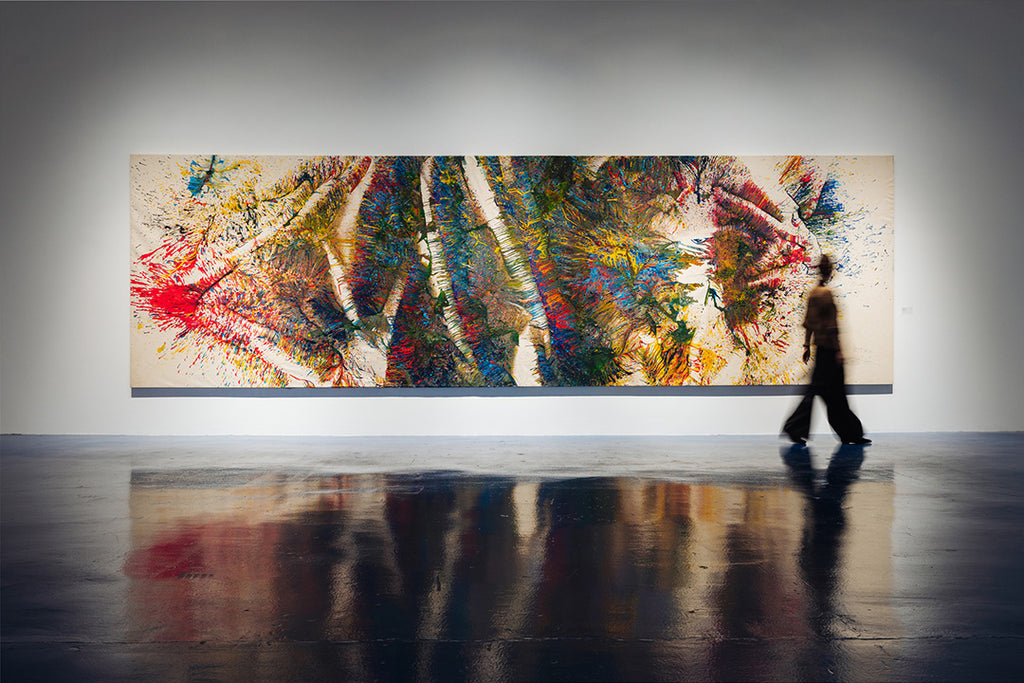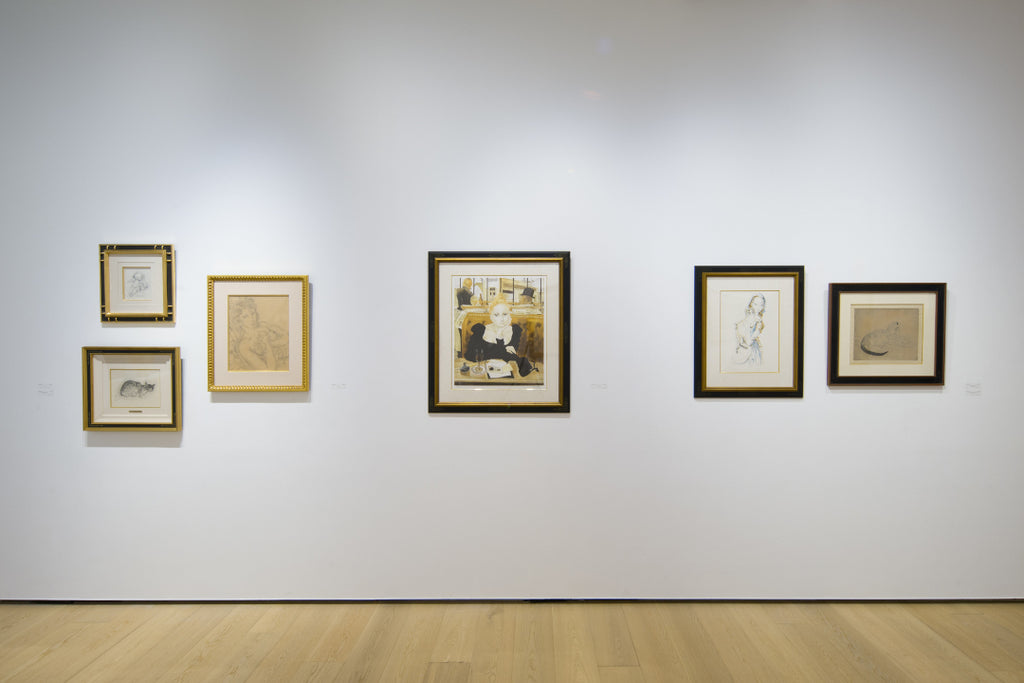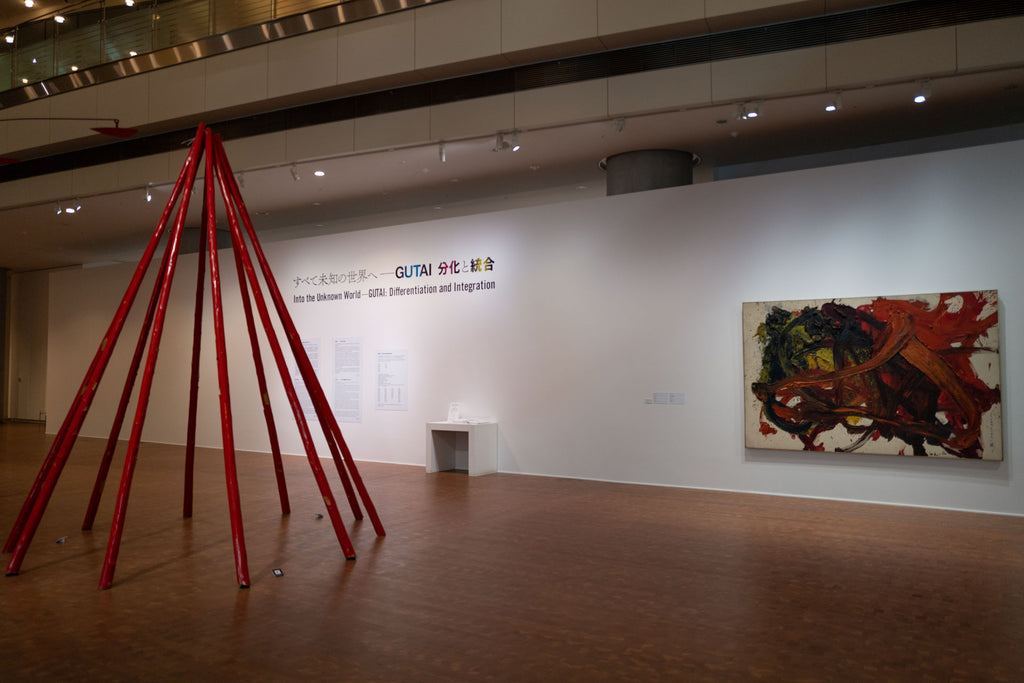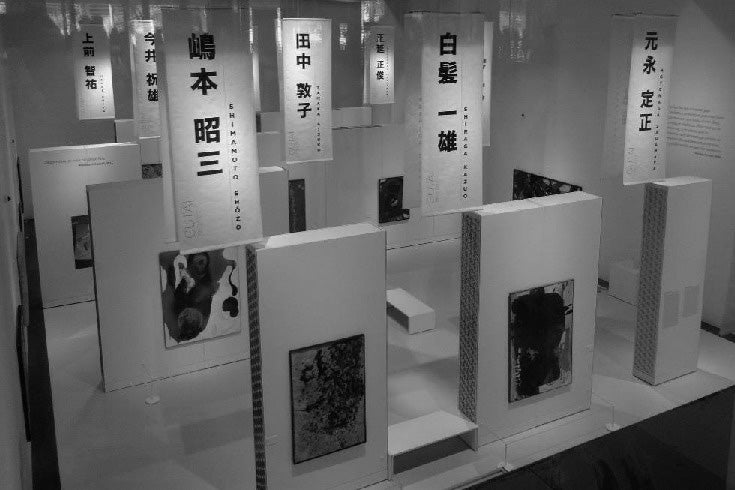ARTICLES
The Beauty of Tricky Structures Created by Gutai Member Yuko Nasaka
GUTAI STILL ALIVE 2015 vol.1
15/35

A project evolving the digitized archive of the book, “GUTAI STILL ALIVE 2015 vol.1”. The 15th edition focuses on Yuko Nasaka, a 2nd-generation member of the Gutai Art Association, known for her use of drill holes and concentric circles. Art critic Hiroyuki Nakatsuka casts a light on the charm of Nasaka's works as seen through her relationship with Gutai.
Yuko Nasaka: A Madonna of Gutai’s Second Generation – Cumulation of Drilled Holes, Concentric Circles Represents “Mysterious Space” or “Infinity”
Hiroyuki Nakatsuka
Art critic
Core members of the Gutai group passed away one after another in recent years: Kazuo Shiraga in 2008, Sadamasa Motonaga in 2011 and Shozo Shimamoto in 2013. One of Gutai’s founding members and the oldest active artists, Chiyu Uemae, held a retrospective in 2012 at BB Plaza Museum in Kobe. He is 93.
The cultural heritage, DNA, myths and legends of Gutai have been taken over by a second generation of the group, families of its defunct members, young researchers and collectors in and outside Japan. Such second-generation Gutai members as Shuji Mukai, Tsuyoshi Maekawa, Takesada Matsutani, Norio Imai and Sadaharu Horio are spotlighted today. Retrospectives at the National Art Center, Tokyo and the Solomon R. Guggenheim Museum in New York, exhibitions by Gutai artists in Japan and abroad, publication of catalogs and other material on Gutai (some in English), and Gutai works going on the international market all indicate a trend toward Gutai’s reevaluation.
Yuko Nasaka too belongs to the second generation of Gutai. She won prizes at the 47th exhibition of Nika artists’ group and the fifth Gendai Nihon Bijutsu (contemporary Japanese art) exhibition in 1962, and the Ashiya city art exhibitions in 1962-64. She joined Gutai in 1963. Her works at the 15th Ashiya city art exhibition in 1962, “12,073 Holes,” “10,044 Holes” and “11,402 Holes,” won the mayor’s award and the 15th year memorial prize. The works bore numerous holes drilled from the back of cardboard sheets. In the 16th edition of the exhibition the following year, “Work II” won the city council president’s award, and in the 17th edition in 1964 “Work 1” won the Kawachi Prize. In all these, Jiro Yoshihara headed the jury. The Sunday Mainichi weekly dated Oct. 7, 1962 ran a full-page photograph of Nasaka drilling holes on her work, along with introduction of Shiraga, Shimamoto and Mukai and others.
At the time when Nasaka joined Gutai, the group was undergoing a drastic reshuffle in its members. Mukai joined Gutai in 1961, Maekawa in 1962, Nasaka and Matsutani in 1963; Imai, Kumiko Imanaka, Senkichiro Nasaka, Michimasa Naohara, Minoru Yoshida, Minoru Onoda, Masaya Sakamoto, Satoshi Tai, Aine Kinashi, among others, joined the group in 1965; and the following year Joji Kikunami, Horio, Motonao Takasaki entered the group. As many as 20 artists became new Gutai members between 1961 and 1966. The number of Gutai artists almost doubled since before Maekawa, Nasaka and Matsutani joined the group. On the other hand, early members Yozo Ukita, Atsuko Tanaka and Akira Kanayama left the group between 1964 and 1965. A new era of Gutai started about the year Nasaka joined the group.
The Asahi Shimbun of April 4, 1964 described the 14th Gutai exhibition in a story headlined “Gutai at a Crossroads”: “It is lamentable that the splendid experimental spirit of those days to discover new beauty now looks sluggish. In such an atmosphere, Shuji Mukai’s rhythmical arrangement of signs, Yuko Nasaka’s pure poetry created by red, blue and golden dots, and Teruyuki Tsubouchi’s sweet sentiment expressed by vinyl paint on lines drawn by a marker stood out and impressed me with their mild style.”
Nasaka held a solo exhibition at Gutai Pinacotheca in November 1964, following exhibitions by Mukai, Matsutani and Maekawa.
On the occasion of Nasaka’s solo show at Gutai Pinacotheca, Yoshihara published a text dated Oct. 10, 1964: “It has been nearly three years since I first saw works by Yuko Nasaka at an Ashiya city art exhibition. They bore an array of thorny drilled holes on sheets of solid, cool gray. The works were huge and the holes would number tens of thousands. They didn’t look so fresh, but I sensed some kind of vigor that would be brought about only when an artist settled down to the work.
“Then she joined Gutai. Her devotion to making an array of something and large-scale works has been constant. Her works used to look desolate, but recently they became rich in color. The thorny holes and later arrayed nails have been replaced by small colored dots. Recently she seems to be devoted to producing mysterious circles using a rotating table. She must soon make an array of such circles. She joints similar works she produces every day vertically and horizontally to make a huge work. By this tricky structure she gets the largest wall at every exhibition of ours. She is small, quiet and graceful, but has great vitality. She is bright and persistent, and somewhat extraordinary. Her works will grow greater.”
According to a chronology by Mizuho Kato, during the solo show at Gutai Pinacotheca (Nov. 1-10; and probably on Wednesdays afterward that month), Japanese-American painter Matsumi Kanemitsu visited the show on Nov. 4; Kanemitsu, Paul Jenkins and critic Jules Langsner visited the show again on Nov. 11; Jenkins and Langsner took Robert Rauschenberg, John Cage, Merce Cunningham and Toshi Ichiyanagi to the show on Nov. 16. Cage rolled a coin on a die casting work with sticks on its surface by Nasaka. A photograph shows Yoshihara crouching down to pick up the coin, along with Cage. Jenkins, inspired by Gutai, wanted to make paintings and worked for a while on the second floor of Gutai Pinacotheca. On Nov. 29, William S. Lieberman, a curator at the Museum of Modern Art, visited the show for research. Langsner wrote in the magazine Art International (April 1965, IX/3), “Yuko Nasaka creates mysterious and evocative circles on the lathe, using synthetic paint. She drills holes on huge sheets of cardboard painted with spray, which makes the surface rough, as if weathered.”
In the 18th Gutai news works exhibition (1967), Nasaka showed a box-shaped sculpture containing a whirlpool of tape. In the 19th (1967), a hemispheric kinetic piece. In the 20th, she exhibited an array of circles again. The Asahi Shimbun (July 10, 1968) described it as “tableaux like negatives.” In the Gutai exhibition at the 1970 International Exposition, Nasaka showed a pair of round mirrors on the ceiling and floor, and a ventilator using plastic foam, under the direction of her husband Senkichiro.
After the disbandment of Gutai in 1972, Nasaka was busy taking care of her parents-in-law, but exhibited at Osaka Contemporary Art Center in 1985 and ABC Gallery in 1986; a “Women’s” exhibition by female artists in 1987, 1989, 1991 and 1993, and at the Osaka Triennale in 1990 and 1993. Her parents-in-law already died, but when we talked about them, she was moved to tears.
(Monthly Gallery, August 2013)
Read more about the “Gutai Art Association »
*Information in this article is at the time of publication.



